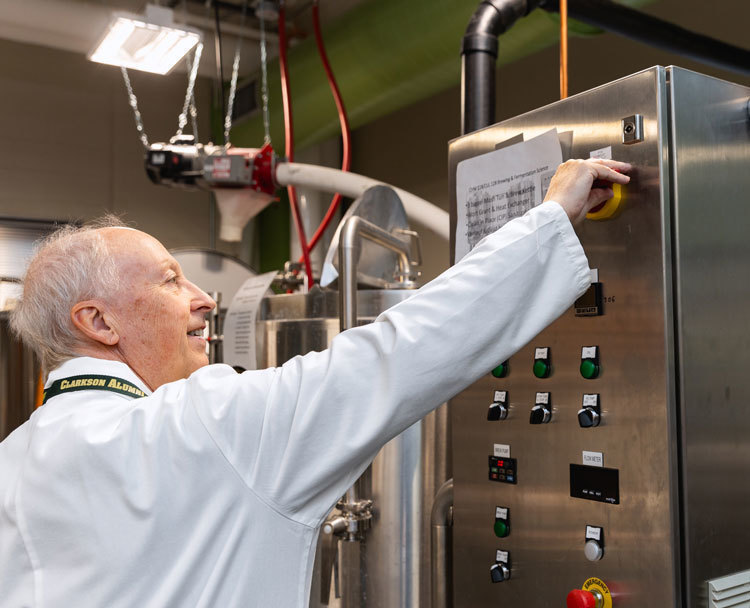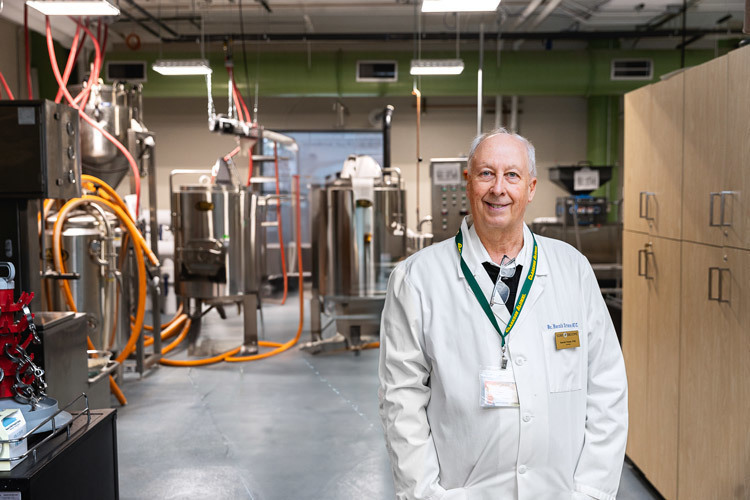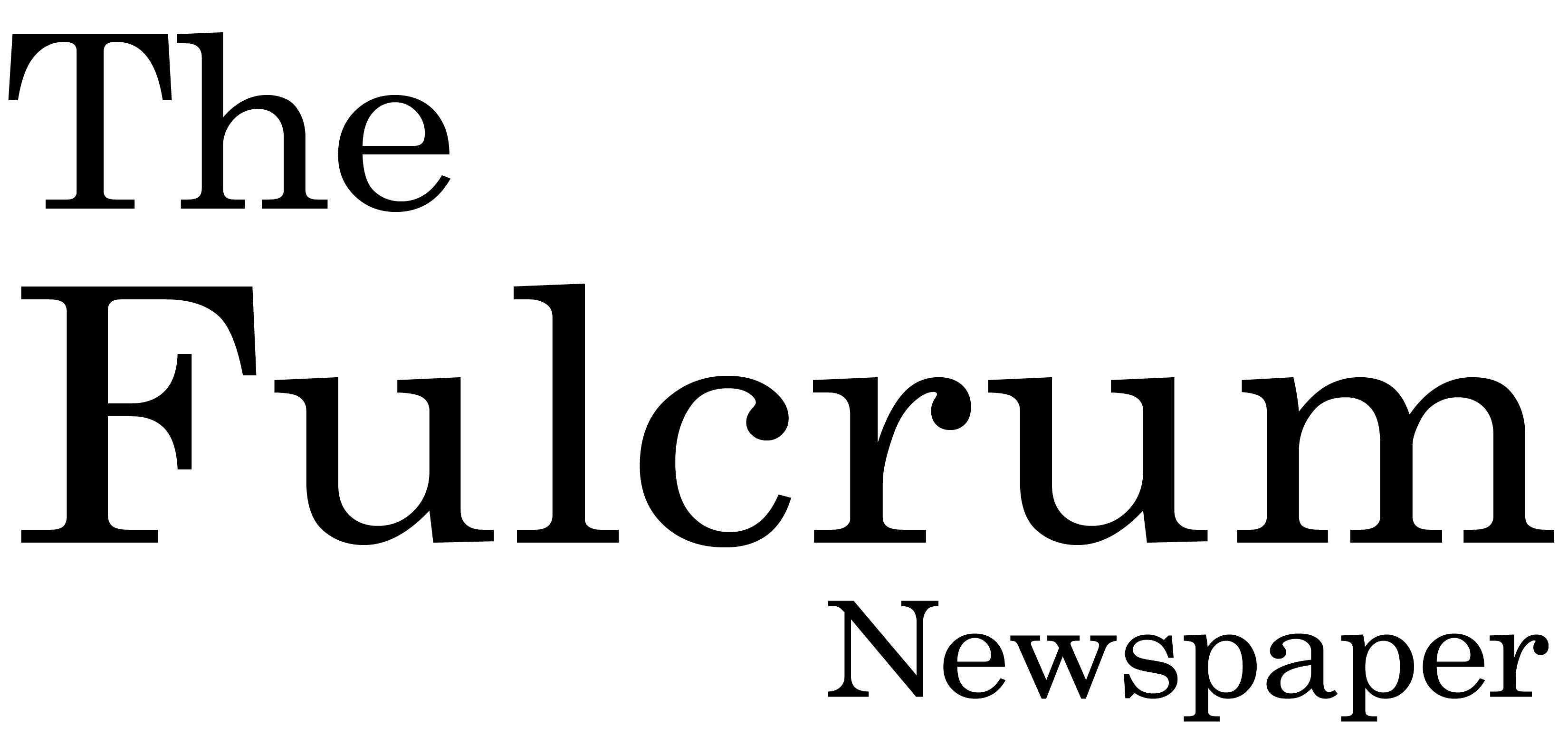By Elisabeth Costanzo Stewart
For over four decades, Dr. Harold Trimm (CH ’02) has remained synonymous with chemistry at SUNY Broome. A champion of both the College and the universality of chemistry, Dr. Trimm has devoted his life to making science engaging and accessible for two generations of students.
In addition to providing health science and STEM students with a comprehensive foundation in staple courses like general, organic, and biochemistry, Trimm has spent his career developing unique, chemistry-centered specialty courses for academic programs in every division at SUNY Broome. His interdisciplinary collaborations range from Marine Chemistry: An Introduction to Chemical Oceanography (CHM 126), to Kitchen Chemistry (CHM 127), to Forensic Sciences (CHM 121), to the Chemistry of Art (CHM 129).
He has edited and published dozens of papers and textbooks, is routinely called to testify as an expert witness in crime scene forensics, and holds patents in both Europe and the United States. Trimm also played an instrumental role in the creation of three academic programs, including Paramedic: A.A.S, Environmental Science: A.S., and SUNY Broome’s newest program, Food Science: A.A.S.
When he isn’t teaching a room full of future healthcare professionals the intricacies of organic chemistry or crafting a new course to make science enjoyable for “non-science-y” people, he uses his S-endorsed CDL to shuttle students to field trips in a biodiesel school bus. And yes, he also co-wrote the grant to secure the funding for the bus. Incredibly, these are just a few of Dr. Trimm’s contributions to the Community’s College. The list could go on and on.

Photo Credit: Matt Ebbers
The son of an NYPD police officer and Long Island crossing guard, Harold Trimm was born in Brooklyn, NY. Trimm, his parents, and his older sister, a future nurse, whom he would end up regularly tutoring in chemistry, moved from Flatbush to St. James, Long Island when the children were young.
When Harold was in seventh grade, his parents sent him to The Stony Brook School, a private, college-preparatory school known for its premier science faculty. It was there that Trimm fell in love with all of the sciences but developed a particular fondness for chemistry. As the “central science,” chemistry serves as the foundational link between biology and medicine, math and physics, and environmental science and engineering. Harold loved that through studying chem, he could be part of it all.
After graduating from The Stony Brook School, Trimm attended Clarkson University to pursue a degree in chemistry. While toying with the idea of becoming a physician, Harold joined the Potsdam Volunteer Rescue Squad, first as an EMT and then as a paramedic. But his time spent in the back of an ambulance redirected his career goals.
“Being exposed to so much trauma ended up depersonalizing it for me,” Trimm explained. “I didn’t like that I was becoming insensitive to the pain and suffering of others. It dawned on me that I really didn’t like hospitals and didn’t have the best bedside manner, so I decided to switch my focus towards earning my PhD.”
Harold remained at Clarkson University for his master’s in chemistry and Ph.D., specializing in inorganic solution kinetics and thermodynamics. Though he loved conducting research in a lab, his graduate school experiences as a teaching assistant in chemistry and calculus fostered a love of leading a classroom.
After graduating from Clarkson, Trimm was invited to participate in a three-year postdoctoral fellowship in physics at Brunel University in London, England, funded by the Arthritis Foundation. But before he traded in his hockey stick for a cricket bat and headed across the pond, Harold spent one semester as a chemistry adjunct professor at what was then Broome Community College.

At the conclusion of his postdoc, Harold returned to SUNY Broome thanks to a combination of Clarkson connections and his positive semester as an adjunct professor. After just two years as an assistant professor, Dr. Trimm was elected to serve as the Chair of the Chemistry Department, an impressive feat for an untenured professor. He remained the department chair for the following thirty-five years.
In the 1980s, 1990s, and 2000s, it was very common for SUNY Broome’s STEM faculty to be poached by local industries, most notably by IBM. While industry regularly called, Dr. Trimm consistently declined, preferring to remain on campus with his students, sharing his wide variety of interests through the lens of chemistry.
In homage to his NYPD roots and his fascination with forensic science, Dr. Trimm created one of the most beloved general science electives in SUNY Broome’s history. After being hired to consult at local environmental science labs, Trimm crafted a chemistry elective focused on the environmental field. As a result, the College encouraged him to expand that course into a full degree program, which is now chaired by Dr. Kennie Leet. Then, in 2005, when SUNY Broome wanted to establish its own EMT/paramedic program, Dr. Trimm stepped forward to coordinate that program, revamping its curriculum to be both student and SUNY-friendly.
Trimm’s newest venture is developing the food science program, which will transform students into food science technicians in various industrial food manufacturing settings, including brewing, distilling, and the dairy food sector. Students wishing to transfer will be poised to enter fields such as food science, chemical engineering, chemistry, agriculture engineering, and beyond.
When Harold isn’t in the lab, he is riding his motorcycle, flying his airplane, or tending to his horses, a nod to his father’s years with the mounted unit. A lifelong lover of all things mechanical, he restores antique clocks and radios and can always be found tinkering with some engine or machine.
On campus, Dr. Trimm regularly co-teaches with his wife and fellow chemist, Barbara. The Trimm’s met at SUNY Broome when Barbara, then the laboratory director at NYSEG, was appointed to the Chemistry Department’s advisory board. They quickly bonded over their shared love of science, and the rest is history. Part of that history includes their two sons, Erik and Bryan. While Bryan followed in his parents’ chemistry footsteps and in graduate school worked under the Nobel Prize winning chemist M. Stanley Whittingham, it is their son Erik Lasky, an artist, who co-teaches the very popular Chemistry of Art (CHM 129) course with his dad.
After committing the last forty-plus years to debunking the myth that chemistry isn’t for everyone, Dr. Harold Trimm shows no signs of slowing down, a relief to the colleagues and students who love him. The ultimate question is, what course will he develop next?

Photo Credit: Matt Ebbers
Tags: Emergency Medical Technology - Paramedic AAS and Cert, Food Science, Liberal Arts and Sciences AS


